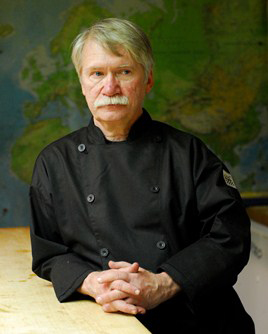Lentils 101: 10 Things Your Students Need to Know
Wednesday, 25 March 2015 03:00
 Familiarity with cooking and incorporating lentils into various menu applications can help your students meet nutrition regulations, budgets and consumer demands when they become foodservice professionals.
Familiarity with cooking and incorporating lentils into various menu applications can help your students meet nutrition regulations, budgets and consumer demands when they become foodservice professionals.
Foodservice educators not only need to prepare their students to meet expanding nutrition regulations in schools and healthcare settings, but to simultaneously cater to increasing consumer preferences for healthy, affordable and sustainable ingredients that—above all—still taste good. Allow us to introduce a dark horse in helping foodservice educators rise to meet this challenge: lentils.
Top 10 Facts Your Students Need to Know About Lentils
- Lentils are nutritional powerhouses. They are cholesterol-free and sodium-free, and loaded with potassium, folate, iron and fiber. One serving of lentils boasts nearly half as much protein as a serving of pork, and two times as much proteinas a serving of quinoa.
- Lentils naturally cater to a variety of specialty diets, including gluten-free, vegetarian and allergen-friendly. Lentil flour can even be used as a wheat-flour alternative to make gluten-free baked goods (like the cookies pictured).

 Emily Williams Knight—the newest of three educators on the NRAEF’s board—is committed to helping more Americans achieve meaningful, fulfilling careers in the restaurant industry via a respected national industry platform.
Emily Williams Knight—the newest of three educators on the NRAEF’s board—is committed to helping more Americans achieve meaningful, fulfilling careers in the restaurant industry via a respected national industry platform. Here’s a valuable education-resources fact sheet to help educators effectively teach seafood sustainability.
Here’s a valuable education-resources fact sheet to help educators effectively teach seafood sustainability. Naturally, educators must stress to their students the critical importance of proper knife skills. But, says this chef-consultant, the reality in the workplace doesn’t always match what we teach. (Don’t miss the YouTube video link.)
Naturally, educators must stress to their students the critical importance of proper knife skills. But, says this chef-consultant, the reality in the workplace doesn’t always match what we teach. (Don’t miss the YouTube video link.) Many students are not used to conducing structured observations and might not know what to look for and how often to record behaviors. The more explicit you are about how they should conduct the observation, the more likely it will be an effective learning experience.
Many students are not used to conducing structured observations and might not know what to look for and how often to record behaviors. The more explicit you are about how they should conduct the observation, the more likely it will be an effective learning experience. Top chefs know that exceptional produce is where flavor begins. More produce choices equates to more chances to shine. That’s why citrus is something to celebrate.
Top chefs know that exceptional produce is where flavor begins. More produce choices equates to more chances to shine. That’s why citrus is something to celebrate. As their career paths become clear, students will inevitably emulate what they’ve experienced in our classrooms and kitchens. Thus, our responsibility is great. Which attitudes, aptitudes and beliefs do we want graduates to portray throughout their careers as a result of our actions?
As their career paths become clear, students will inevitably emulate what they’ve experienced in our classrooms and kitchens. Thus, our responsibility is great. Which attitudes, aptitudes and beliefs do we want graduates to portray throughout their careers as a result of our actions? Joe Perdue, CCM, CHE, the club industry’s leading hospitality educator, died in Atlanta on Jan. 19, 2015, after a long illness. He was 64.
Joe Perdue, CCM, CHE, the club industry’s leading hospitality educator, died in Atlanta on Jan. 19, 2015, after a long illness. He was 64.